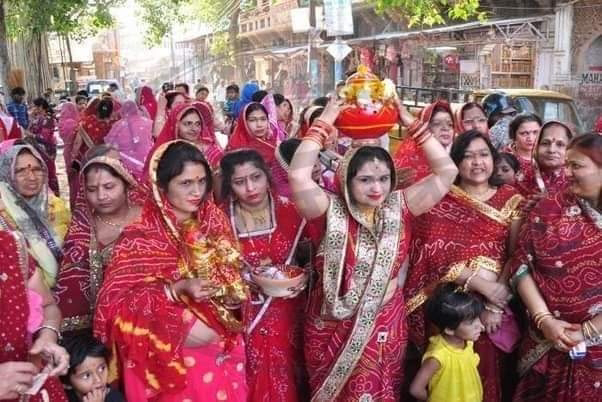Saint Samartha Ramdas' "Manache Shlok": The qualities of a Hari-bhakta:
Swami Samarth Ramdas (1608 - 1681) was a prolific Marathi saint poet, who spread the message of Rama-bhakti all across India during the 17th century. He was also a social reformer, and a nation builder who aroused the Hindus across northern and western India to set aside their selfishness and pettiness, and form a unified fighting force against the Turkic imperial powers of those days. Through his Harikatha discourses and his voluminous poetic works: "Dasbodh", "Atmaram", "Manache Shlok" and many more, Samarth did the groundwork for the armed revolution that the great Maratha king Chhatrapati Shivaji Maharaj, his sons Sambhajiraje and Rajaram Maharaj, and the latter's wife Maharani Tarabai, together would lead against the Turkic rulers both in the Deccan, as well as Delhi.
The "Manache-Shlok" is a collection of 205 hymns in nectarine Marathi, set to the "Bhujangapraya" meter, in which Ramdas Swami advices the human mind on maintaining a balance between worldly life and spirituality. Among them, this set of ten verses is particularly beautiful as it describes the attributes of a perfect devotee.
श्लोक/Shlokas:
मनीं लोचनीं श्रीहरी तोचि पाहे
जनीं जाणता भक्त होऊनी राहे
गुणीं प्रीती राखे क्रमू साधनाचा
जगीं धन्य तो दास सर्वोत्तमाचा ।।४७
He whose eyes desire to behold none, and whose mind is fixated upon none but the Form of Lord Hari, who lives among people as a realised, knowledgeable devotee, who has an intrinsic attachment towards relishing the various attributes (kalyana-gunas) of the Lord, and establishes His worship diligently, in all the world, know him to be the most fortunate servitor of the Lord Supreme.
सदा देवकाजीं झिजे देह ज्याचा
सदा रामनामें वदे नित्य वाचा
स्वधर्मेचि चाले सदा उत्तमाचा
जगीं धन्य तो दास सर्वोत्तमाचा ।।४८
He whose body strives in the service of the Lord, whose tongue continuously utters the Rama-Nama, who treads the path of dutifully performing his prescribed duties (swadharma) with perfection, in all the world, know him to be the most fortunate servitor of the Lord Supreme.
सदा बोलण्या सारिखे चालताहे
अनेकीं सदा एक देवासी पाहे
सगूणी भजे लेश नाही भ्रमाचा
जगीं धन्य तो दास सर्वोत्तमाचा ।।४९
He who does as he says, who visualises but One God in all of creation, who worships the saguna swaroopa (ie personal aspect) of God without getting bewildered in any way, in all the world, know him to be the most fortunate servitor of the Lord Supreme.
नसे अंतरी कामकारी विकारी
उदासीन जो तापसी ब्रह्मच्यारी
निवाला मनीं लेश नाही तमाचा
जगीं धन्य तो दास सर्वोत्तमाचा ।।५०
He who harbours no lust (which is the source of numerous other faults in human character) within, who stays detached, leads an austre life, and maintains celibacy, who has cleansed his heart of all negativity and has rid himself of the Tamasic (demoniac) tendencies, in all the world, know him to be the most fortunate servitor of the Lord Supreme.
मदे मच्छरे सांडिली स्वार्थबुद्धी
प्रपंचीक नाही जयातें उपाधी
सदा बोलणें नम्र वाचा सुवाचा
जगीं धन्य तो दास सर्वोत्तमाचा ।।५१
He who has shed pride, hate and selfishness, who is not afflicted by worldly desires, who always speaks soft, comforting words, in all the world, know him to be the most fortunate servitor of the Lord Supreme.
क्रमी वेळ जो तत्वचिंतानुवादें
न लिंपे कदा दंभ वादे विवादें
करी सूखसंवाद जो ऊगमाचा
जगीं धन्य तो दास सर्वोत्तमाचा ।।५२
He who spends his time contemplating upon the Supreme Truth, desists from falling into fruitless arguments and disputes to show off, and prefers joyous discussions about God the Origin of all, in the entire world, know him to be the most fortunate servitor of the Lord Supreme.
सदा आर्जवी प्रिय जो सर्व लोकीं
सदा सर्वदा सत्यवादी विवेकी
न बोले कदा मिथ्य वाचा त्रिवाचा
जगी धन्य तो दास सर्वोत्तमाचा ।।५३
He who by his sublime conduct becomes dear to one and all, who is ever honest and discerns between the appropriate and inappropriate, who never utters an untruth nor gives contradictory statements, in all the world, know him to be the most fortunate servitor of the Lord Supreme.
सदा सेवी आरण्य तारुण्यकाळी
मिळेना कदा कल्पनेचेनि मेळीं
चळेना मनीं निश्चयो दृढ ज्याचा
जगीं धन्य तो दास सर्वोत्तमाचा ।।५४
He who seeks solace in the solitude of the forests right during his youth instead of getting entangled in worldly desires, whose mind remains fixated on God without distraction, in all the world, know him to be the most fortunate servitor of the Lord Supreme.
नसे मानसीं नष्ट आशा दुराशा
वसे अंतरी प्रेमपाशा पिपाशा
ऋणी देव हा भक्तिभावे जयाचा
जगीं धन्य तो दास सर्वोत्तमाचा ।।५५
He whose heart is never afflicted by evil desires or ill-will, but harbours love for all and a yearning for the Divine, practices devotion in a manner that obligates God Himself towards him, in all the world, know him to be the most fortunate servitor of the Lord Supreme.
दिनाचा दयाळु मनाचा मवाळु
स्नेहाळु कृपाळु जनीं दास पाळू
तया अंतरी क्रोध संताप कैंचा
जगीं धन्य तो दास सर्वोत्तमाचा ।।५६
He who is compassionate towards the needy, whose heart is tender, who is affectionate, merciful, and seeks only the welfare of all, including those who serve him, how can vices like anger and rage ever enter his mind? For in all the world, know him to be the most fortunate servitor of the Lord Supreme.



























